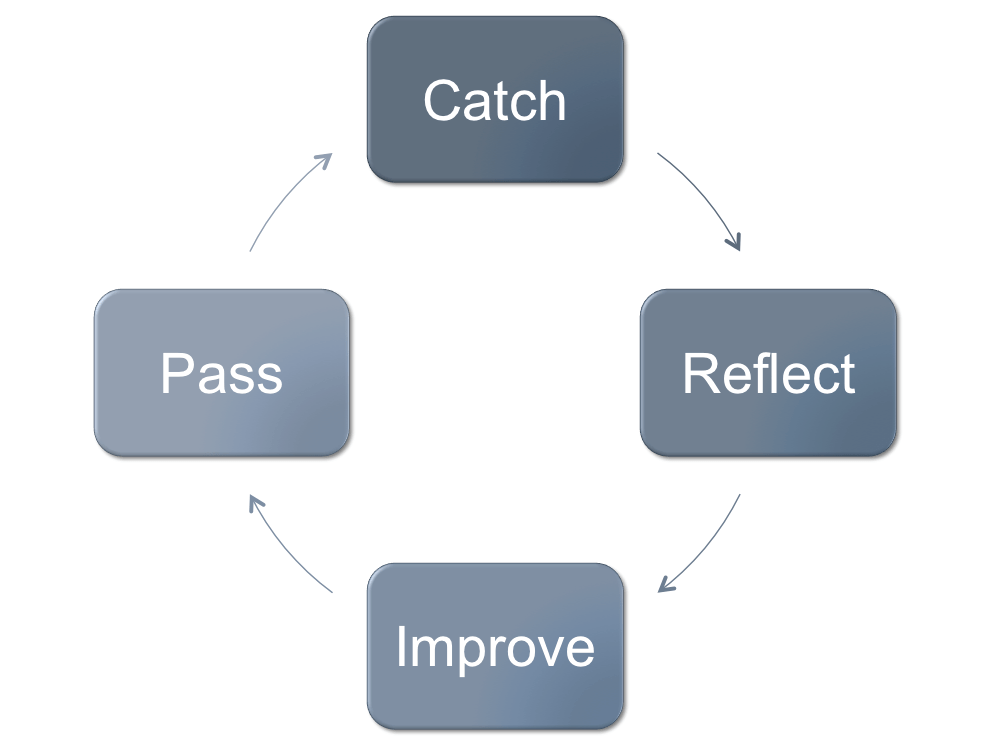Starting with How to Improve Your Average View Duration (AVD), this guide delves into the crucial metric that dictates the success of your content across various platforms. Understanding and optimizing AVD is no longer optional; it’s essential for content creators aiming to truly connect with their audience. This guide will break down the complexities of AVD, offering practical strategies and actionable insights to help you significantly boost your content’s watch time and, consequently, its impact.
We’ll explore everything from the fundamentals of AVD and how it differs across platforms like YouTube and TikTok, to detailed analysis of your current performance. You’ll learn how to pinpoint areas for improvement, optimize your content from pre-production to post-production, and implement audience engagement tactics that keep viewers hooked. Get ready to transform your content and maximize its reach and effectiveness.
Understanding Average View Duration (AVD)
Average View Duration (AVD) is a crucial metric for content creators, representing the average time viewers spend watching a video or piece of content. It’s a direct indicator of audience engagement and content effectiveness. Understanding AVD is essential for optimizing content strategy, improving viewer retention, and ultimately, achieving content success on various platforms.
Defining Average View Duration
AVD is calculated by dividing the total watch time of a video by the total number of views. This gives you a single number representing the average length of time viewers are spending with your content. A higher AVD generally indicates that your content is more engaging and holds viewers’ attention longer.
AVD = Total Watch Time / Total Number of Views
AVD Differences Across Platforms
AVD benchmarks vary significantly depending on the platform. Factors like content format, audience expectations, and platform algorithms influence these differences.
- YouTube: YouTube, with its longer-form video focus, typically sees higher AVDs for longer videos. A video that’s 10 minutes long might have an AVD of 5-6 minutes if it’s considered successful. Shorter videos on YouTube might have lower AVDs, but can still be successful if they provide high value in a short amount of time.
- TikTok: TikTok is characterized by short-form videos. AVDs are often lower in terms of absolute time (e.g., 15-30 seconds), but the percentage of the video watched can be high. A TikTok video with an AVD of 20 seconds, when the video is 25 seconds long, indicates a high level of engagement.
- Instagram Reels: Similar to TikTok, Instagram Reels favors short-form content. AVDs are usually lower than YouTube but the percentage of video watched is important. A Reel might have an AVD of 10-15 seconds, depending on the content length.
Relationship Between AVD and Audience Engagement
AVD is strongly correlated with other engagement metrics, such as:
- Watch Time: AVD directly contributes to total watch time, which is a key signal for algorithms. A higher AVD translates to a higher total watch time, which can improve content visibility.
- Audience Retention: AVD reflects audience retention. Analyzing the audience retention graph reveals when viewers are dropping off. This helps creators identify problematic areas in their content. For example, a sharp drop-off early in a video suggests a need to improve the introduction or address viewer expectations more effectively.
- Click-Through Rate (CTR): A high AVD often correlates with a higher CTR. If viewers are engaged, they are more likely to click on calls to action within the video or on related content.
- Comments, Likes, and Shares: Engaged viewers are more likely to interact with the content through comments, likes, and shares. A high AVD often indicates that viewers find the content valuable and are more likely to express their appreciation.
Analyzing Your Current AVD

Understanding your Average View Duration (AVD) is crucial for optimizing your content strategy. Knowing where you stand allows you to identify strengths and weaknesses, and track your progress over time. This section guides you through finding, interpreting, and monitoring your AVD on various platforms.
Finding Your AVD on Different Platforms
The process of locating your AVD varies depending on the platform you use. However, the core principle remains the same: navigating to your analytics dashboard and locating the relevant metrics. Here’s how to find your AVD on some popular content platforms:
- YouTube: YouTube provides comprehensive analytics within YouTube Studio.
- Log in to YouTube Studio.
- Click on “Analytics” in the left-hand menu.
- Select “Overview” or “Reach” to see overall performance.
- Click “Engagement” to see specific engagement metrics, including Average View Duration.
- You can also see AVD for individual videos by navigating to the video’s analytics page.
The AVD is usually presented as a time format (e.g., 03:30 for 3 minutes and 30 seconds) or as a percentage of the video’s total length.
- Facebook: Facebook’s insights provide data on video performance.
- Go to your Facebook Page.
- Click on “Insights” in the left-hand menu.
- Select “Videos.”
- You’ll find AVD information within the video performance metrics.
Facebook often presents AVD as a time value, similar to YouTube. The specific location and presentation may vary slightly based on Facebook’s interface updates.
- TikTok: TikTok’s analytics dashboard offers insights into video performance.
- Open the TikTok app and go to your profile.
- Tap the three lines in the top right corner and select “Creator tools.”
- Tap “Analytics.”
- Select “Videos” to view the analytics for your videos, including Average Watch Time.
TikTok typically displays the average watch time in seconds.
- Instagram: Instagram provides analytics for both Reels and standard video posts.
- Go to your Instagram profile.
- Tap the three lines in the top right corner and select “Insights.”
- Navigate to “Content You Shared.”
- Select “Reels” or “Videos” to see performance metrics, including Average Watch Time.
The presentation of AVD on Instagram may vary, but it is usually provided as a time value.
Interpreting AVD Data to Pinpoint Areas for Improvement
Analyzing your AVD data is essential for understanding how viewers interact with your content. It helps to identify areas where you are succeeding and where improvements are needed. Consider the following points when interpreting your AVD:
- Compare AVD across videos: Analyze AVD variations among your videos. Identify videos with significantly higher or lower AVDs. This comparison allows you to understand what content types, formats, or topics resonate best with your audience. For example, if a video tutorial consistently has a higher AVD than a short-form comedy sketch, it indicates that your audience is more engaged with tutorials.
- Identify drop-off points: Look for significant drops in viewer retention throughout your videos. Platforms often provide a graph showing viewer retention over time. These drop-off points highlight areas where viewers are losing interest. This can be a result of pacing issues, confusing explanations, or lack of visual appeal.
- Consider video length: A longer video should ideally have a higher AVD than a shorter one, assuming both are equally engaging. However, a longer video with a low AVD might indicate that viewers are not staying engaged throughout the entire duration.
- Benchmark against industry averages: Research the average AVDs for your content niche. This benchmark helps you assess your performance relative to competitors. However, remember that industry averages can vary widely. Focus on improving your AVD over time, regardless of external benchmarks.
- Analyze audience feedback: Combine your AVD data with audience feedback, such as comments and likes. This qualitative data provides context to your quantitative analysis. For example, if a video with a low AVD receives comments criticizing a confusing explanation, you can pinpoint the problem.
Example: A cooking channel notices that its recipe videos consistently have higher AVDs than its “cooking tips” videos. This indicates that viewers are more engaged with the detailed recipe content. The channel can then focus on creating more recipe videos or improving the “cooking tips” videos to increase engagement.
Creating a Process for Regularly Monitoring and Tracking AVD Changes
Regularly monitoring and tracking your AVD is crucial for consistent improvement. Establishing a structured process helps you stay informed about your content’s performance and make informed decisions. Here’s a process for monitoring and tracking AVD changes:
- Establish a schedule: Set a regular schedule for reviewing your AVD data. This could be weekly, bi-weekly, or monthly, depending on your content output frequency. Consistent monitoring ensures you catch trends and changes promptly.
- Use a spreadsheet or tracking tool: Create a spreadsheet or use a dedicated analytics tool to track your AVD data. Record the AVD for each video, along with other relevant metrics such as video length, topic, and upload date.
- Set up alerts: Some platforms allow you to set up alerts for significant changes in your AVD. This automated system helps you to quickly identify when your content’s performance is improving or declining.
- Analyze trends over time: Review your AVD data over several periods to identify trends. Are your AVDs generally increasing, decreasing, or staying the same? This analysis helps you understand the impact of your content strategy changes.
- Experiment and iterate: Make changes to your content based on your AVD analysis. Experiment with different formats, topics, and styles. Track the impact of these changes on your AVD. Continuously refine your approach based on the results.
- Document your findings: Keep a record of your AVD analysis, including the changes you made and the results. This documentation helps you learn from your experiences and refine your content strategy.
Optimizing Content for Higher AVD

Optimizing your video content for a higher Average View Duration (AVD) is a crucial aspect of YouTube success. It’s about keeping viewers engaged and encouraging them to watch more of your video. The pre-production phase is where you lay the groundwork for this engagement, influencing how long people stick around.
Key Elements in Pre-Production to Boost AVD
The pre-production phase is the planning stage of your video. Focusing on specific elements during this stage significantly impacts AVD. These elements shape the viewer experience and determine whether they stay engaged.
- Target Audience Understanding: Knowing your audience’s preferences, interests, and viewing habits is fundamental. Research their preferred video lengths, topics, and content styles. Understanding their needs helps you tailor your content to resonate with them. For example, if your audience typically watches videos of 5-7 minutes, aiming for a similar length and structuring your content accordingly can improve AVD.
- Topic Selection and Relevance: Choose topics that are relevant, interesting, and likely to hold viewers’ attention. Conduct research to identify popular search terms and trending topics. Consider creating content that solves a problem, provides valuable information, or entertains your audience. Selecting topics that are highly engaging and aligned with audience interests ensures higher watch times.
- Scripting and Storyboarding: Develop a well-structured script and storyboard. These tools provide a roadmap for your video, ensuring a clear narrative, pacing, and visual flow. A strong script and storyboard help maintain viewer interest and prevent them from losing engagement.
- Content Structure and Pacing: Plan the structure of your video to maintain viewer engagement throughout. Use a clear introduction, a well-defined body with logical progression, and a concise conclusion. Vary the pacing to keep the content dynamic and prevent viewers from getting bored.
- Call to Actions (CTAs): Incorporate strategic CTAs to encourage viewers to watch longer. This could involve prompting them to watch related videos, subscribe to your channel, or engage with the content.
Pre-Production Checklist for AVD-Focused Strategies
A pre-production checklist ensures you address all the critical aspects of video creation to maximize AVD. Following a structured checklist streamlines the process and helps you stay focused on your goals.
- Define Target Audience: Identify the specific demographics, interests, and viewing habits of your target audience. Use analytics tools to gather data on their preferred content types, video lengths, and engagement patterns.
- Topic Research and Selection: Conduct thorough research to identify relevant and trending topics. Analyze competitor videos to understand what works well. Select a topic that aligns with your audience’s interests and has high search volume.
- Script Development: Write a detailed script that includes a clear introduction, a well-defined body, and a concise conclusion. Ensure the script has a logical flow, engaging content, and incorporates strategic pacing.
- Storyboard Creation: Create a storyboard that visually represents each scene in your video. Include details such as shot composition, camera angles, and any visual elements that will enhance the storytelling.
- Content Structure and Pacing Planning: Plan the structure of your video, including the introduction, body, and conclusion. Vary the pacing to maintain viewer interest and prevent boredom. Consider using visual aids, transitions, and music to enhance the viewing experience.
- Call to Action (CTA) Integration: Determine where and how you will incorporate CTAs to encourage viewers to watch longer. This might include prompting them to subscribe, watch related videos, or leave comments.
- Equipment and Resource Planning: Plan the equipment needed (camera, microphone, lighting), locations, and any other resources necessary for the video production.
- Review and Refinement: Review the script, storyboard, and content structure. Make any necessary refinements to ensure the video is engaging and optimized for AVD.
Scripting and Storyboarding Impact on AVD
Scripting and storyboarding are vital for a high AVD. A well-crafted script and storyboard provide a clear roadmap, ensuring a cohesive and engaging viewing experience.
- Scripting’s Role: A well-written script is the backbone of your video. It ensures the content is clear, concise, and engaging. The script should have a compelling introduction to grab the viewer’s attention, a well-structured body that delivers valuable information, and a concise conclusion that summarizes the key points. A script that avoids tangents and stays on topic is more likely to keep viewers engaged.
- Storyboarding’s Influence: A storyboard visualizes your video before you start filming. It Artikels each scene, including shot composition, camera angles, and any visual elements. Storyboards help ensure visual consistency, prevent pacing issues, and allow you to plan transitions and visual effects effectively. This helps in keeping the viewer engaged with the content.
- Impact on Pacing and Engagement: Both scripting and storyboarding impact pacing and engagement. A well-paced video keeps viewers interested, while a poorly paced one can lead to boredom and drop-off. A script with a logical flow and a storyboard with dynamic visuals help maintain viewer interest.
- Example: Consider a tutorial video on “How to Bake a Cake.” Without a script and storyboard, the video might jump between steps, be confusing, and lose viewers quickly. With a detailed script outlining each step and a storyboard visualizing each shot, the video becomes clear, easy to follow, and more likely to retain viewers. The script might begin with an engaging introduction, the body of the video could break down each step with clear instructions, and the conclusion might offer a call to action, such as suggesting related videos.
The storyboard might show close-ups of the ingredients, the mixing process, and the final product, keeping the viewer engaged visually.
Optimizing Content for Higher AVD

To truly maximize your Average View Duration (AVD), you need to master the art of video production. This involves a blend of technical skill and creative storytelling to captivate your audience from the opening frame to the final call to action. By strategically employing pacing, editing techniques, and visual storytelling, you can significantly improve viewer retention and, consequently, your AVD.
Production Techniques for Viewer Retention
Capturing and holding viewer attention requires a proactive approach during the video creation process. This involves a multifaceted strategy, including carefully considered pacing, dynamic editing, and a commitment to visual storytelling.
- Strategic Pacing: Varying the pace of your video is crucial. Avoid a monotonous rhythm that can lull viewers into disinterest.
- Dynamic Editing: Employing a range of editing techniques keeps the video engaging.
- Visual Storytelling: Using visuals to convey information and emotion.
Pacing, Editing, and Visual Storytelling to Increase AVD
The effectiveness of pacing, editing, and visual storytelling hinges on their skillful integration. These elements work in concert to create a compelling viewing experience.
- Pacing Examples:
- Fast-Paced Sections: For high-energy topics, or to create a sense of urgency. Imagine a review of a new gadget, where quick cuts and rapid-fire information delivery keeps viewers engaged.
- Slower-Paced Sections: For explaining complex concepts or allowing emotional moments to resonate. Think of a tutorial on a software program, where clear explanations and pauses for comprehension are vital.
- Editing Examples:
- Cutaways: Using cutaways to other visuals, like b-roll footage or related images, can break up the monotony of a talking head video and add context. For example, when discussing a travel destination, showing shots of the local culture and scenery keeps the audience engaged.
- Jump Cuts: Jump cuts, when used effectively, can create a sense of dynamism.
- Transitions: Employing various transitions can improve flow.
- Visual Storytelling Examples:
- Show, Don’t Tell: Instead of just stating facts, use visuals to demonstrate them.
- Use of Graphics: Incorporate on-screen graphics, animations, and text overlays.
Incorporating Compelling Intros, Outros, and Calls to Action
The beginning and end of your video are prime real estate for capturing and retaining viewers. A well-crafted intro grabs attention, the outro reinforces your message, and a clear call to action guides viewers to the next step.
- Compelling Intros:
- Hook Viewers Immediately: Start with a captivating question, a surprising statistic, or a visually arresting scene. For instance, a fitness video could begin with a before-and-after transformation to grab attention.
- Clearly State the Topic: Quickly and concisely inform viewers about the video’s subject matter and what they’ll gain.
- Effective Outros:
- Summarize Key Takeaways: Briefly recap the main points covered in the video.
- Reinforce Your Brand: Remind viewers of your channel’s identity.
- Calls to Action (CTAs):
- Guide Viewers: Clearly instruct viewers on what to do next, such as subscribing, watching another video, or visiting your website.
- Use Visual Cues: Employ on-screen graphics, animations, and text overlays to highlight your CTAs.
Content Format Strategies for Higher AVD

Content format significantly influences how long viewers stay engaged. Choosing the right format can drastically improve Average View Duration (AVD), making your content more impactful and valuable to your audience. Understanding the strengths of different formats and how to adapt them is crucial for maximizing viewer retention.
Content Formats Encouraging Longer Viewing Sessions
Certain content formats naturally lend themselves to longer viewing times. These formats often provide more in-depth information, tell compelling stories, or offer a highly engaging experience. Considering the following formats can be a strategic move for boosting your AVD.
- Long-Form Video Essays: Video essays delve deeply into a topic, often using a narrative structure to explore complex ideas. They can be highly engaging due to their storytelling capabilities and comprehensive analysis. Successful video essays on platforms like YouTube can exceed 20 minutes or even an hour, depending on the subject matter.
- Documentaries: Documentaries, particularly those with compelling narratives and high production value, captivate audiences for extended periods. They allow for a deep dive into a subject, fostering a sense of immersion. Documentary films frequently surpass the 60-minute mark.
- Tutorials and How-To Guides: Tutorials and guides, especially those covering complex topics or involving multiple steps, can keep viewers engaged for a considerable time. These formats offer practical value, encouraging viewers to follow along and complete the process. For instance, a detailed software tutorial could easily run for 15-30 minutes.
- Live Streams: Live streams offer a unique opportunity for extended engagement. The interactive nature of live sessions, including Q&A sessions and real-time discussions, encourages viewers to stay tuned for longer periods. Live streams can last for hours, depending on the content and the audience’s interest.
- Podcast Episodes: Podcasts, particularly those with engaging hosts and interesting guests, provide an audio format that many listeners enjoy while multitasking. Podcasts can range from 30 minutes to several hours.
- Webinars: Webinars combine presentation with interaction, and are ideal for in-depth discussions and audience engagement. These formats often run from 45 minutes to 1.5 hours.
Successful Long-Form Content Strategies and Impact on AVD
Successful long-form content strategies are built on strong foundations: compelling narratives, high production values, and effective audience engagement. The following examples illustrate how these strategies can directly impact AVD.
- Case Study: YouTube Channels Focused on Deep Dives: Channels like “The Film Theorists” (Film Theory), and “Wendover Productions” have built their success on long-form content. They analyze various topics, from movies to economics, offering detailed explanations and using visuals to maintain viewer interest. Their AVD is significantly higher than channels posting shorter content. For example, “Wendover Productions” has videos that are 10-20 minutes long, resulting in a high AVD, due to its use of storytelling and informative content.
- Documentary Series on Streaming Platforms: Netflix and other streaming platforms invest heavily in documentary series. These series, often featuring multiple episodes, keep viewers engaged for hours. The use of high-quality production, interviews, and a compelling narrative contributes to high AVD and overall viewership. For instance, the “Making a Murderer” series on Netflix, which consists of multiple episodes, has a high AVD because viewers become invested in the story and continue watching to discover how the case unfolds.
- Podcast Series: Podcasts with recurring episodes and guest interviews consistently generate high listener retention. The consistent release schedule and engaging content encourage listeners to return for new episodes, thereby increasing the overall listening time. “The Joe Rogan Experience” is a prime example, with episodes often exceeding two hours, demonstrating how consistent, high-quality content can significantly boost AVD.
Adapting Content Formats to Diverse Audience Preferences
To maximize AVD, adapting content formats to suit audience preferences is critical. Consider the following strategies to ensure content remains engaging for a broader audience.
- Provide Multiple Formats: Offering content in various formats (video, audio, text) caters to diverse preferences. Some viewers may prefer to watch a video, while others might prefer listening to a podcast or reading a transcript.
- Create Content Series: Breaking down a complex topic into a series of videos or episodes allows viewers to consume information at their own pace. This strategy encourages viewers to return for more, boosting overall viewing time.
- Optimize for Mobile Viewing: Ensure content is mobile-friendly. Mobile devices account for a significant portion of content consumption. Content that is easy to watch on a smartphone or tablet will naturally have a higher AVD. This includes clear visuals, easy-to-read text, and a mobile-optimized website.
- Implement Interactive Elements: Incorporate interactive elements like polls, quizzes, and Q&A sessions to increase engagement and keep viewers actively involved. These elements make the viewing experience more dynamic and encourage viewers to stay longer.
- Use Subtitles and Transcripts: Providing subtitles and transcripts makes content accessible to a wider audience, including those who are hearing-impaired or prefer to read along. It also allows viewers to watch videos in noisy environments.
- Gather Feedback: Actively solicit feedback from your audience through surveys, comments, and social media interactions to understand their preferences and adjust your content accordingly.
Audience Engagement Tactics

Incorporating audience interaction is a powerful strategy to significantly boost Average View Duration (AVD). By actively engaging viewers, you transform passive observers into active participants, encouraging them to spend more time watching your content. This shift from a one-way broadcast to a two-way conversation fosters a sense of community and investment, compelling viewers to stay engaged longer.
Methods for Using Polls, Q&A Sessions, and Community Engagement
Using interactive elements within your videos can significantly extend watch time. These elements provide opportunities for viewers to participate directly, making the content more engaging and increasing the likelihood they will stay until the end.
- Polls: Integrating polls directly into your videos is an effective method. For example, if you’re reviewing different types of cameras, you could include a poll asking viewers which camera type they prefer. This prompts immediate interaction and allows viewers to feel their opinion matters, encouraging them to watch until the poll’s conclusion. YouTube’s built-in poll feature is a convenient tool for this purpose.
- Q&A Sessions: Dedicating segments of your videos to answering questions submitted by your audience is a highly effective tactic. Before filming, announce a Q&A session in your community tab or in previous videos, inviting viewers to submit questions. In the video, select and answer the most relevant questions. This not only provides valuable information but also acknowledges and values the audience’s input.
This interaction often leads to longer view times as viewers stick around to see if their question is answered.
- Community Engagement: Encourage interaction outside the video itself. Create a dedicated section in your community tab for discussions, or link to a Discord server or other community platform where viewers can interact with each other and with you. This creates a sense of belonging and encourages viewers to return for more. Post behind-the-scenes content, polls, or ask questions that relate to the video topic to keep the conversation going.
Importance of Responding to Comments and Fostering a Sense of Community
Actively responding to comments and nurturing a sense of community is crucial for increasing viewer retention and fostering loyalty. This strategy builds trust and encourages viewers to feel valued, which increases their likelihood of watching more of your content.
- Responding to Comments: Regularly monitor and respond to comments on your videos. Acknowledge positive feedback and address constructive criticism thoughtfully. This demonstrates that you value your audience’s opinions and are committed to improving your content.
- Fostering a Sense of Community: Encourage interaction among viewers. Ask open-ended questions in your videos that invite discussion in the comments section. Highlight interesting comments or discussions in future videos or in your community tab. This creates a space where viewers feel comfortable sharing their thoughts and connecting with each other.
- Example of Success: Consider a gaming channel that regularly responds to comments and features viewer gameplay in their videos. This strategy not only increases AVD but also fosters a dedicated community. Data from several gaming channels shows that those who consistently engage with their audience experience a 15-20% increase in average view duration compared to channels that do not.
Final Conclusion
In conclusion, mastering How to Improve Your Average View Duration (AVD) requires a multifaceted approach, encompassing content optimization, strategic engagement, and consistent analysis. By implementing the techniques Artikeld in this guide, you can not only increase your AVD but also foster a deeper connection with your audience, leading to greater success and impact. Remember, every second counts; make every view count!